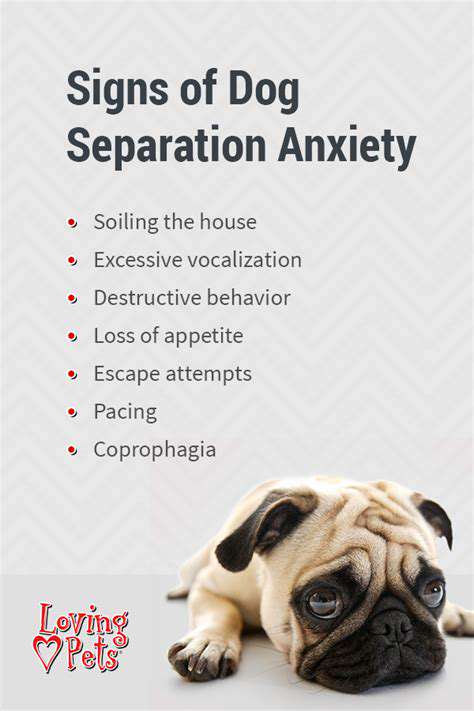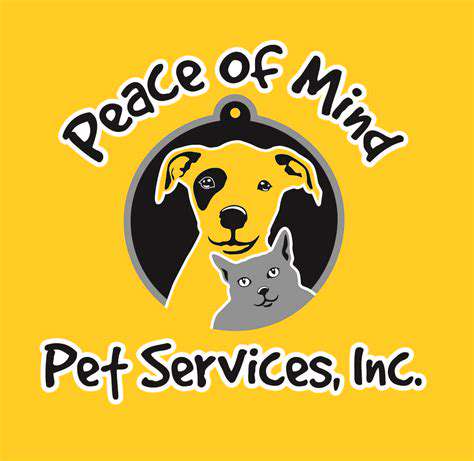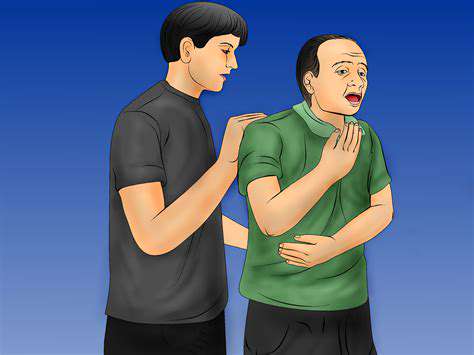Guide to Dealing with Separation Anxiety in Dogs

What Separation Really Means for Dogs
When we talk about separation in dogs, we're referring to their emotional response to being apart from their human companions. Unlike humans who might experience separation in various contexts, dogs specifically struggle with the absence of their primary caregivers. This distinction is crucial because canine separation anxiety manifests in unique ways that differ from human experiences. Pet owners often miss these signals because they're looking through a human lens rather than understanding canine psychology.
Dogs don't conceptualize separation the way we do - for them, it's a primal survival issue. Their pack mentality means being alone triggers instinctual fears of abandonment. Recognizing this fundamental difference helps owners respond more effectively to their pet's distress signals.
Telltale Emotional Responses
Watch for subtle changes in your dog's demeanor when you prepare to leave. Some may become overly clingy, while others might appear unusually withdrawn. The most heartbreaking sign is what we call silent suffering - when dogs internalize their anxiety rather than acting out. These quiet cases often go unnoticed until the behavior becomes severe.
Unlike humans who can articulate their feelings, dogs communicate distress through body language. A tucked tail, pinned-back ears, or excessive yawning when you grab your keys can all indicate rising anxiety levels. Learning to read these canine cues is essential for early intervention.
Behavioral Red Flags
Destructive behavior isn't always about boredom - it's often a cry for help. Pay special attention to destruction focused on exit points (doors/windows) or items carrying your scent (shoes, pillows). This targeted destruction reveals the true nature of their distress.
Other behaviors like excessive salivation, pacing predetermined paths, or refusing treats when alone all point to separation anxiety rather than general misbehavior. These actions stem from panic, not disobedience, and require compassionate correction.
Changes in Daily Routines
Monitor your dog's eating and elimination patterns. Some anxious dogs refuse food when alone but eat normally when their person returns. Others may have accidents despite being house-trained - not from spite, but from genuine distress.
Sleep disturbances are particularly telling. An anxious dog might only sleep when their person is present, remaining hyper-vigilant when alone. This sleep deprivation exacerbates their anxiety, creating a vicious cycle.
The Social Side Effects
Dogs with separation anxiety often develop problematic behaviors around other dogs or people. Some become overly attached to one person, while others may show aggression when that person interacts with others. This isn't dominance - it's insecurity manifesting as resource guarding of their primary attachment figure.
Interestingly, some dogs develop shadowing behavior, following their person relentlessly around the house. While it might seem endearing, this constant proximity-seeking indicates underlying anxiety about potential separation.
Physical Health Consequences
Chronic stress takes a real toll on a dog's body. Look for excessive shedding, hot spots, or digestive issues that flare up when you're away. These aren't coincidences - they're physical manifestations of psychological distress. The stress hormone cortisol can suppress immune function over time.
Some dogs develop obsessive behaviors like excessive licking (often of one specific paw) or tail-chasing when left alone. These self-soothing attempts can lead to actual physical harm if left unaddressed.
Interestingly, some canine anxiety management techniques mirror human mindfulness practices. Creating predictable routines helps dogs feel secure, much like meditation's grounding effect on humans. Both species benefit from learning to sit with discomfort rather than reacting to it.
Read more about Guide to Dealing with Separation Anxiety in Dogs
Hot Recommendations
- Review: [Specific Brand] Small Animal Cage
- Why Rescuing Pets Saves Lives
- Best Pet First Aid Kits [What to Include]
- How to Help Stray Animals in Your Community
- Guide to Adopting a Pet When You Have Kids
- Top Reptile Heat Lamps
- Heartwarming Rescue Stories That Will Inspire You
- Review: [Specific Brand] Bird Cage
- Best Aquarium Filters [2025 Review]
- Review: [Specific Brand] Smart Litter Box




![Review: [Specific Brand] Smart Pet Door](/static/images/33/2025-05/EaseofInstallationandSetup.jpg)




![A Day in the Life of My [Pet's Name]](/static/images/33/2025-05/BreakfastofChampions28or2CatLeast2CofChampions-SizedTreats293A.jpg)

